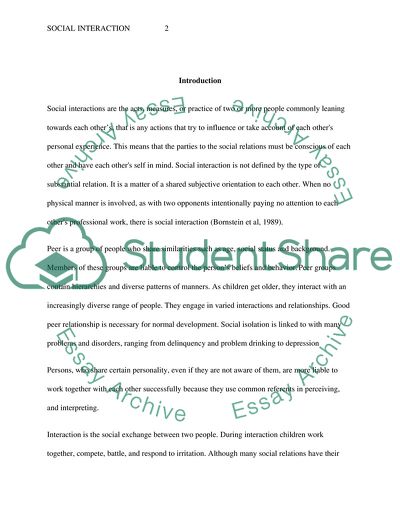Cite this document
(Discuss the similarities and differences between peerpeer interactions Essay, n.d.)
Discuss the similarities and differences between peerpeer interactions Essay. https://studentshare.org/sociology/1801694-discuss-the-similarities-and-differences-between-peerpeer-interactions-and-siblingsibling-interactions-in-different-contexts-and-consider-the-developmental-implications-of-such-interactions
Discuss the similarities and differences between peerpeer interactions Essay. https://studentshare.org/sociology/1801694-discuss-the-similarities-and-differences-between-peerpeer-interactions-and-siblingsibling-interactions-in-different-contexts-and-consider-the-developmental-implications-of-such-interactions
(Discuss the Similarities and Differences Between Peerpeer Interactions Essay)
Discuss the Similarities and Differences Between Peerpeer Interactions Essay. https://studentshare.org/sociology/1801694-discuss-the-similarities-and-differences-between-peerpeer-interactions-and-siblingsibling-interactions-in-different-contexts-and-consider-the-developmental-implications-of-such-interactions.
Discuss the Similarities and Differences Between Peerpeer Interactions Essay. https://studentshare.org/sociology/1801694-discuss-the-similarities-and-differences-between-peerpeer-interactions-and-siblingsibling-interactions-in-different-contexts-and-consider-the-developmental-implications-of-such-interactions.
“Discuss the Similarities and Differences Between Peerpeer Interactions Essay”. https://studentshare.org/sociology/1801694-discuss-the-similarities-and-differences-between-peerpeer-interactions-and-siblingsibling-interactions-in-different-contexts-and-consider-the-developmental-implications-of-such-interactions.


